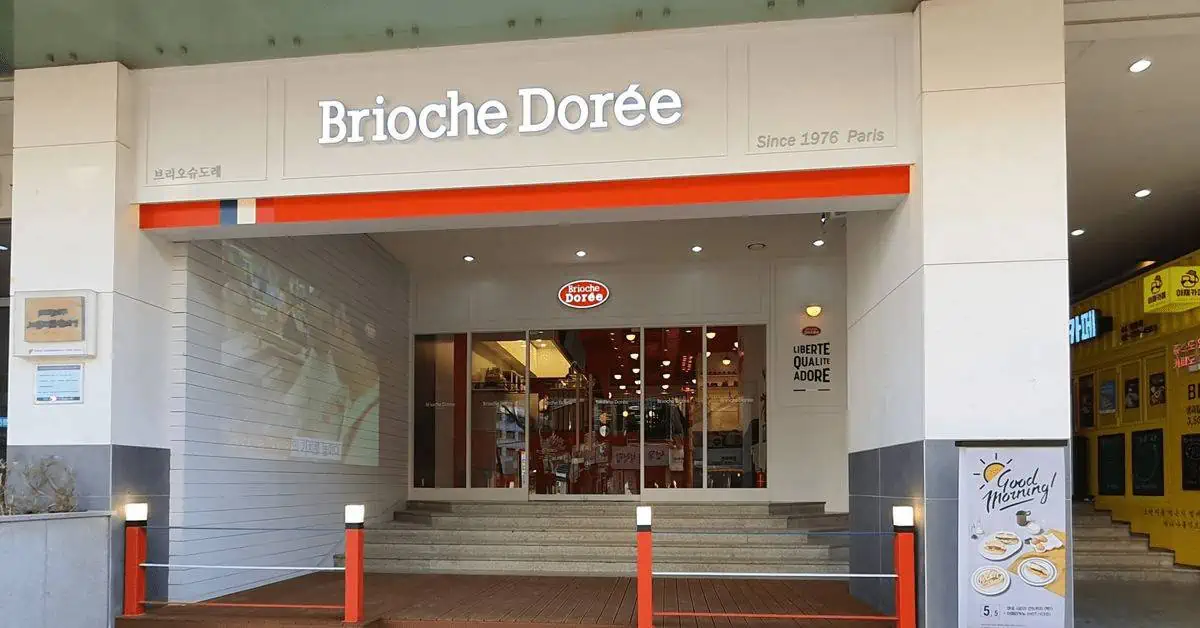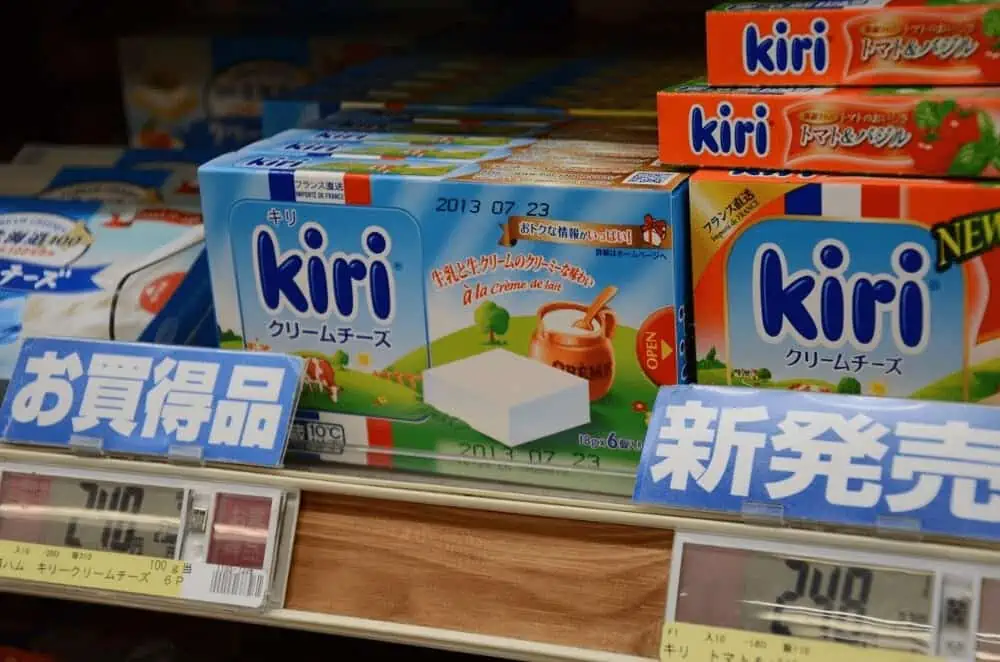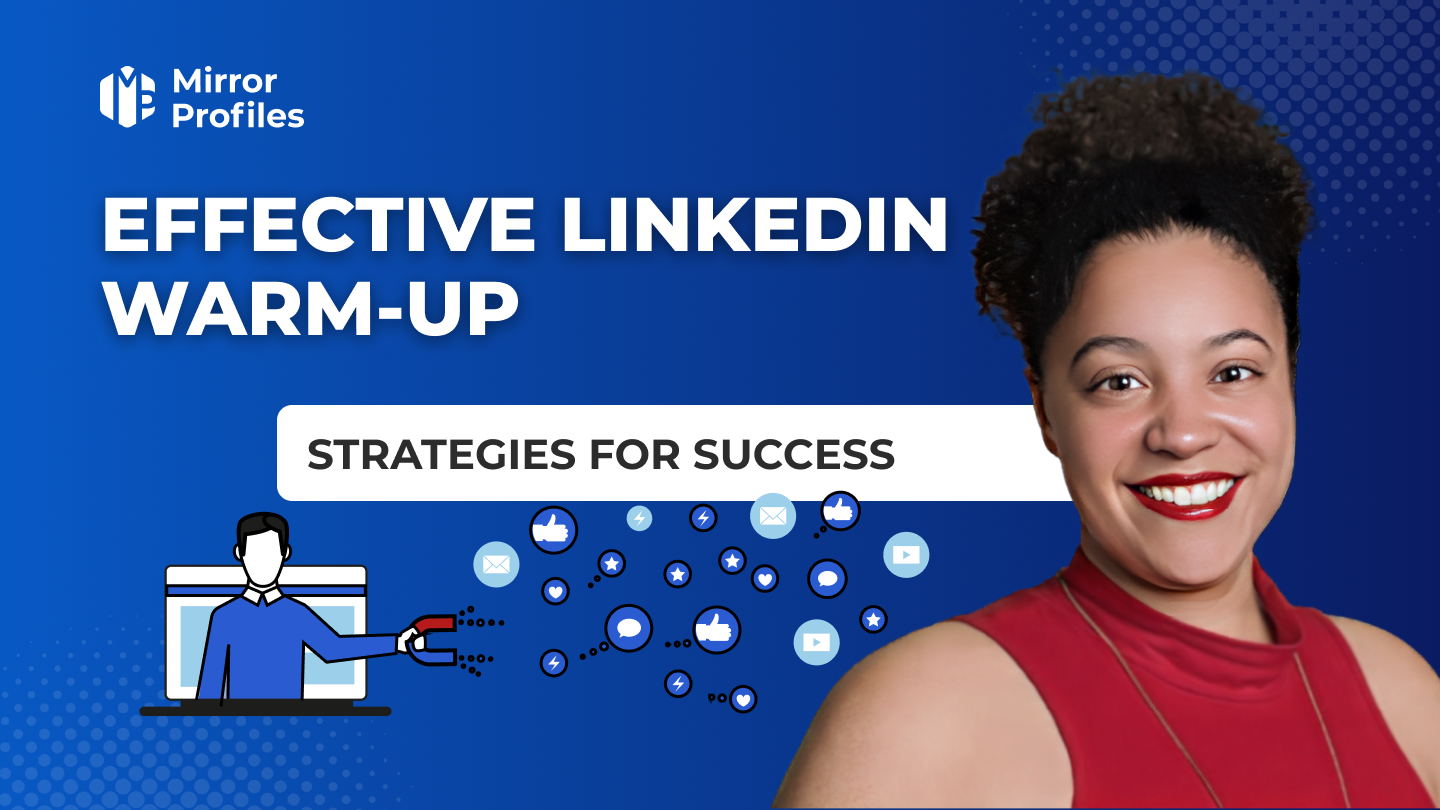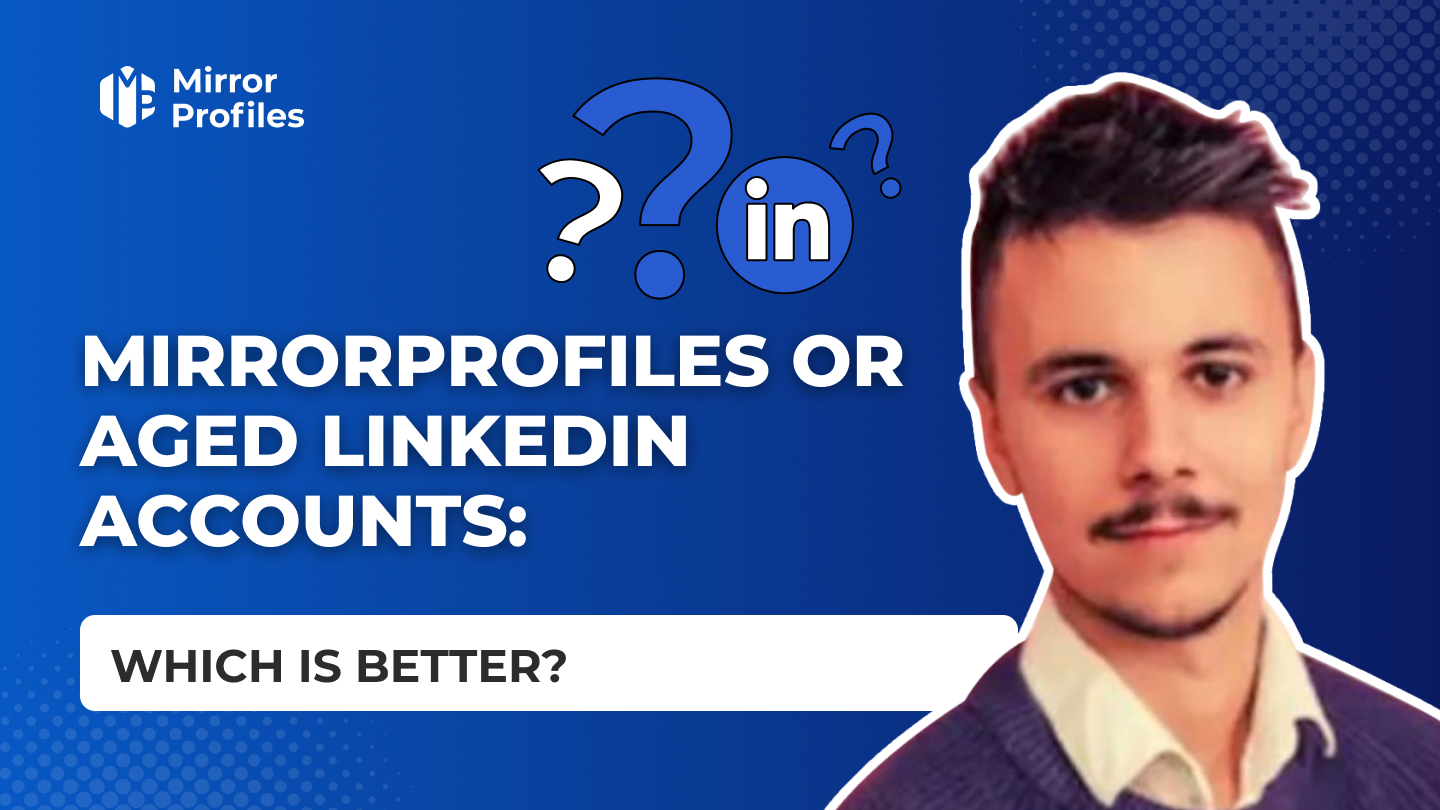The internationalization of a product or service is an unavoidable step that most companies face sooner or later. In 2023, it’s rare for companies not to consider internationalization from the outset. Indeed, internationalization offers the opportunity to test your value proposition against the challenges and specificities of your target market.
For example, MirrorProfiles was designed from the outset to be a product that could be used anywhere in the world, facilitating export and meeting all kinds of prospecting needs on Linkedin. While internationalization is attractive, it’s imperative to be aware of the challenges it presents, including the risks associated with exporting, and to quickly adjust acquisition channels according to target markets. Approaches vary from country to country, and your targets will not react in the same way to your messages, requiring tailored communication and a thorough understanding of local markets.
This article is based on a number of practical experiences and deliberately takes sides. To be frank, it’s the opposite of what you might read in books or courses you’ve taken.
To successfully internationalize and develop your business, it’s crucial to carry out in-depth market research. This research should identify the specific characteristics and needs of your target audience in each region, including studies of foreign markets and their dynamics. This analysis helps you to determine not only whether your product or service is suitable for the target market, but also to understand competitive dynamics, local consumer habits, and international business practices. What’s more, the right support and specific training can optimize your internationalization strategy.
What’s more, for some companies, the integration of a Volontariat International en Entreprise (V.I.E.) can be a major asset in the development of their operations abroad. This arrangement provides the company with dedicated human resources in the target market, ensuring a local presence without the social charges of a conventional expatriate contract. Collaborating with local partners and entrepreneurs via networks such as the CCI (Chamber of Commerce and Industry) can also reinforce your export strategy and international business development.
As part of your internationalization strategy, it’s essential to adapt your communications to respect cultural and geographic differences. Our optimized Linkedin accounts in the zone of your choice make this particularly easy. This means that your message must be modulated to align with local expectations and understandings, incorporating communication techniques adapted to international markets. Appropriate training in intercultural communication can reinforce the effectiveness of your message and build trust with your new audience, making it easier to develop your international business.
The main reasons for internationalizing Linkedin prospecting
A company’s internationalization is not just a search for new horizons, but also a sound strategy to catalyze development, achieve economies of scale and optimize return on investment (ROI). It also acts as a shield, mitigating risk by diversifying markets and exploring new export opportunities to meet the needs of a diverse, global customer base. A well-thought-out internationalization plan also includes support for entrepreneurs and the creation of solid international networks.
Internationalization strategy: a carefully thought-out conquest
Venturing into the international arena is not a step to be taken lightly. A meticulous internationalization strategy, including a business development plan, enables the company to navigate confidently through the challenges of expansion, optimizing resources and adapting objectives to seize new opportunities on a wider stage. Coaching by export and international development experts can also maximize your chances of success.
Exploring New Growth Vectors
The desire to go international often stems from a desire to increase sales and develop new export projects. For an established company, or one operating in a saturated market, looking beyond borders is a smart way to discover emerging markets and meet new, interested customers. The study of international markets enables us to effectively target global opportunities and minimize the risks associated with exporting.
Cost Optimization and ROI Improvement on an International Scale
International expansion expands the market and customer base, offering opportunities for economies of scale. Whether through the optimized use of company resources, the implementation of digital marketing techniques or through marketing campaigns with a global reach, the company can reach a wider audience without a proportional increase in costs, thus improving its ROI. The integration of international business practices and the exploitation of local partner networks reinforce this optimization.
Risk Mitigation through Diversification
Expanding into new markets, while risky, offers a hedge against the dangers of concentrating on a single market. Internationalization dilutes these risks, offering protection against country- or market-specific economic fluctuations. Risk analysis and in-depth study of foreign markets are essential for successful international development.
Opening up to international B2B customers
For B2B companies, internationalization is not just an option, but often a necessity to serve global customers, ensuring consistency and quality of service across borders. Developing a network of international partners and adapting your business practices to foreign markets are key to success in international business.
Increase Brand Visibility Worldwide
Internationalization is also a lever for boosting brand visibility, by combining global marketing strategies with targeted actions that respect local and cultural specificities, while maximizing the effectiveness of marketing investments. Appropriate digital communication and a presence on international networks can considerably boost your brand’s global profile.
Meeting the expectations of a wide range of customers
Exploring new markets is also a source of innovation, enabling the company to discover and respond to the varied needs of different customer groups, whether local or foreign. By enriching your offering through international market research and adapting your products or services to the expectations of international customers, you strengthen your position both in new territories and in your home market.
Making your product or service accessible to any company in the world gives you a considerable advantage: you’ll never run out of customers. Another advantage is that sometimes products developed in France work better in another country. For example, many SAAS tools specialized in automation work better in the USA than in France. Conversely, products specializing in sales velocity and CRM are better suited to the international market than strictly French ones. Exporting and international development enable you to maximize the potential of your products in foreign markets.
1. Sophie the Giraffe: A must-have for Japanese babies
Sophie the Giraffe, after conquering the United States, is on the road to similar fame in Japan. Stéphanie Arnaud, Vulli’s Marketing Director, emphasizes the application of a proven strategy: highlighting French origin on the packaging and winning the hearts of influential moms, such as Jessica Alba and Kim Kardashian in the United States, and supermodel Yuri Ebihara in Japan. Word of mouth did the rest, and Sophie is now available in 600 Japanese boutiques.
2. Brioche Dorée: a growing success in Korea
Brioche Dorée is enjoying daily success in Korea, with over 800 customers visiting each of its 10 stores every day, a figure that equals French performance. François-Xavier Colas, Asia Director, expresses his satisfaction and reveals ambitious expansion plans, with the opening of 80 new stores by 2025. The recipe for success? A clever blend of 70% authentic French recipes, concocted in Brittany, and 30% local adaptations to please the Korean palate.
3. Kiri in Japan: A Multitude of Tasty Variations
Kiri, the famous portioned cheese, undergoes a remarkable transformation in Japan. Already popular in its classic version, with 50% of Japanese having already tasted it, Kiri is now reinvented in various delicacies such as cheesecakes, tarts and ice creams. This represents a valuable opportunity for the Sarthe plant, which produces not only individual portions but also large blocks for professional use.
There are also many foreign products and services that work better in Europe than in their country of origin.
Instead of pivoting, internationalize! Too many companies or start-ups pivot too quickly because their product doesn’t find a market in their country of origin, but sometimes instead of pivoting, they just test elsewhere. Growth hacking strategies for startups are emerging, including export plans and effective international development practices.
But selling abroad isn’t something you can improvise. You need to be ready and have thought about this strategy several months in advance. One of the easiest and most ROI-producing channels for internationalization is Linkedin, which offers powerful digital tools for international business development.
Let’s take the case we know best: MirrorProfiles. Before offering Linkedin US accounts for rent, we prepared the ground on Linkedin with targeted digital communication. But why this choice?
LinkedIn is the professional social network par excellence, 100% dedicated to the professional world and dedicated to connecting people within it.
- Multiple Features for Diverse Uses: LinkedIn offers a panoply of functions: it’s used to search for individuals and companies, renew with former colleagues or associates, and forge new relationships with influencers or prospects. For students and junior engineers, the platform proves particularly useful in the search for professional opportunities, given that many recruiters advertise their job offers there (81% according to a RégionsJob 2017 survey). What’s more, 75% of recruiters use this network to identify candidates, and 85% carry out online searches on them. In short, the entire professional world is on board, making it an essential tool for international business development.
- Information Watch and Job Search: Beyond the simple job search, LinkedIn is an essential tool for information watch, enabling you to anticipate future trends, monitor your professional environment, and identify innovative players and works in your field. Thanks to its news feed, the platform facilitates this monitoring, making it both rapid and relevant.
- Optimizing your Professional Online Presence: Even when you’re in your final year of studies or in a current position, keeping your LinkedIn profile up to date is crucial to facilitating your future job search. It’s a good idea to keep your profile up to date as early as your student years, so you’re ready to actively seek out professional opportunities.
- Multiple Features for Diverse Uses: LinkedIn offers a panoply of functions: it’s used to search for individuals and companies, reconnect with former colleagues or associates, and forge new relationships with influencers or prospects. For students and junior engineers, the platform proves particularly useful in the search for professional opportunities, given that many recruiters advertise their job offers there (81% according to a RégionsJob 2017 survey). What’s more, 75% of recruiters use this network to identify candidates, and 85% carry out online searches on them. In short, the whole pro world is on it.
- Information Watch and Job Search: Beyond the simple job search, LinkedIn is an essential tool for information watch, enabling you to anticipate future trends, monitor your professional environment, and identify innovative players and works in your field. Thanks to its news feed, the platform facilitates this monitoring, making it both rapid and relevant.
- Optimizing your Professional Online Presence: Even when you’re in your final year of studies or in a current position, keeping your LinkedIn profile up to date is crucial to facilitating your future job search. It’s a good idea to keep your profile up to date as early as your student years, so you’re ready to actively seek out professional opportunities.
LinkedIn, like other social networks (Facebook, Instagram, Twitter, etc.), has its own codes and norms, often implicit.
There are various types of LinkedIn accounts, both free and paid, offering different functionalities. However, for a student or junior engineer, a free account is usually sufficient.
As on other platforms, each user has a profile, and you can connect and establish a “relationship” by sending a request to the person concerned (and receiving a positive response), or vice versa. Companies and organizations have a page that you can “follow” without prior authorization.
LinkedIn operates on a “degree of relationship” logic, and you can interact with people according to how connected they are to you. You can also see who has visited your profile and how many times your name has appeared in search results, unless you activate private mode.
Search on LinkedIn
LinkedIn offers a wide range of search options: by field of activity, page type, job offers, or groups. You can also search by degree of relationship, location, current company, and more. Job search options are also varied, and you can create search alerts to stay informed of new opportunities.
In conclusion, because of the way it’s used and why LinkedIn exists, this channel should be the first to exploit when you want to internationalize your value proposition.
Making your Linkedin prospecting adaptable to different parts of the world is THE most ROI-effective way to internationalize your distribution channels. Here are the key points to remember:
- Linkedin’s networking capabilities enable you to find “early adopters” and gradually build up a solid network in an unfamiliar country, facilitating your international development.
- Linkedin has a monopoly: 90% of your targets are present there, making it a strategic channel for your communication and export efforts.
- Internationalization can cost you little and bring you a lot. For tech products, AI makes it possible to translate your site and tool in a matter of days, optimizing your international development plan.
- Linkedin’s networking capabilities enable you to find “early adopters” and gradually build up a solid network in an unfamiliar country.
- Linkedin has the monopoly, 90% of your targets are present there
- Internationalization can cost you little and bring you a lot. For tech products, AI can translate your site and tool in a matter of days.
In today’s interconnected world, where AI is breaking down language barriers, there’s absolutely no reason, even for small companies, not to look to internationalize quickly. One of our mistakes at Mirrorprofiles was that we waited too long, and today the US market is gradually accounting for over 40% of our users, thanks to strategic support in international development.
In today’s interconnected world, where AI is breaking down language barriers, there’s absolutely no reason why even small companies shouldn’t look to internationalize quickly. One of our mistakes with Mirrorprofiles was that we waited too long, and today the US market is gradually accounting for over 40% of our users.
The challenges of internationalizing Linkedin prospecting
Although internationalization offers many advantages, it requires a well thought-out, well-structured strategy on the part of your company, including an analysis of the risks and opportunities in international markets.
In my opinion, here are the three pillars you need to focus on before prospecting internationally:
- Your team: Make sure they’re ready to communicate and provide after-sales service in a foreign language. Tools such as Crisp and Deepl can make this easier, while offering training in international communication.
- International payment solution: To avoid accounting complications, opt for an international payment solution such as Stripe, which we have identified as one of the best options for export business development.
- Marketing and business materials: make sure they are translated into English, without necessarily translating them into every language, and that they are optimized for international markets.
- Your team: Make sure they’re ready to communicate and provide after-sales service in a foreign language. Tools such as Crisp and Deepl can facilitate this.
- International payment solution: To avoid accounting complications, opt for an international payment solution like Stripe, which we’ve identified as one of the best options.
- Marketing and business materials: make sure they are translated into English, without necessarily translating them into all languages.
Then you’ll see! There’s no need to prepare everything in advance. Sell, prospect, and then manage deliveries.
The internationalization of your company, whatever its sector of activity and whatever method you choose (exporting, relocation, etc.), requires the respect of certain key stages to guarantee the success of this important transition. Nevertheless, keep in mind that to begin internationalization, you can (and even should) skip some of these steps, depending on your project and your priorities.
Step 1: Needs Assessment
Internationalization, a major project similar to restructuring, requires an in-depth audit of the company’s needs in this area. Think about the reasons, the target countries and the objectives to be achieved in the short, medium and long term. These answers will guide your strategy, including market research and an international development plan.
Step 2: Exploring the target market
The exploration of your international target market should include a detailed audit, encompassing the study of the competition, consumer habits, the employment market, and the cultural and linguistic aspects of the target country. This information will help you develop a customized strategy.
Stage 3: Strategy design
Every company needs to develop its own internationalization strategy, tailored to its specific needs and objectives. Your strategy needs to be holistic, encompassing not only marketing and finance, but also human resources, logistics, procurement and communications. Support from international development experts can also be crucial.
Step 4: Fine-tuning the details
Your strategy needs to be meticulously detailed, including technical aspects such as the IT tools and solutions required for day-to-day international management. The necessary transformations could be substantial, and require your team to be properly trained in international business practices.
It’s crucial not to prepare everything in advance. Future challenges will be more manageable once the first challenge has been validated: is there a market for your product in the target country?
As soon as the answer is yes, go for it. The cash surplus will enable you to make the necessary investments without imploding. In short, the challenges of internationalization can be summed up in one word: prospecting. Effective prospecting on international markets, supported by a well-structured plan, is essential for successful export development.
As you can see, internationalization (at least on paper) can take a long time. So start prospecting as soon as possible, otherwise you won’t be able to justify all the time you’ve spent upstream. Use sales prospecting techniques adapted to international markets to maximize your effectiveness.
Once you’ve explored the opportunities offered by the internationalization of your product or service, prospecting is the real issue to prepare for before you take the plunge. However, behind the term “prospecting” lie various strategies and concepts. Let’s take a look at the different options available to you for effective international prospecting.
Once you’ve explored the opportunities offered by the internationalization of your product or service, prospecting is the real challenge to prepare for before you launch. However, behind the term “prospecting” lie various strategies and concepts. Let’s take a look at your options.
Solutions for effective international prospecting
Effective international prospecting may require different strategies from those you employ in your home country. The golden rule for any entrepreneur is to avoid repeating the same mistakes and adopt business practices adapted to international markets.
Exploring Customer Acquisition Channels: Focus on Effective Paths
Navigating the immensity of digital marketing means anchoring your efforts where opportunities abound. Customer acquisition channels are emerging as fertile areas where brands can capture prospects’ attention. Let’s take a closer look at some of these channels, drawing on Marketing Management ‘s insights for successful international business development.
Mastering Content Marketing
Content marketing goes beyond simple storytelling; it asserts your expertise in a specific field and offers an alternative to paid content, which is often overlooked by 75% of Internet users. This cost-effective strategy has the potential to triple lead generation, making it easier to develop your international business.
Email marketing: a timeless classic
Email marketing, though traditional, remains a privileged channel for interacting with brands, bridging the gap between companies and consumers in an often cluttered digital space. Used correctly, it can support your export strategy and strengthen your international sales communication.
Surfing the Waves of Social Networks
Social networks, with their ability to reach diverse audiences, are positioning themselves as an essential, adaptable and relevant acquisition channel, including in a B2B context. Leveraging these platforms for targeted digital communication campaigns can considerably enhance your international prospecting.
The Display: A Digital Signage Panel
Despite the challenges associated with engagement, display has evolved, thanks in particular to programmatic display, offering new perspectives for reaching audiences in a visual and dynamic way. Integrating display into your international marketing strategy can increase your visibility in foreign markets.
Offline advertising: back to basics
Although its prevalence has declined, offline advertising retains relevance, especially when it resonates with an audience that values traditional methods of communication. Combined with digital strategies, it can strengthen your international sales presence.
SEO : Echo in the Digital World
By optimizing visibility on search engines, SEO builds a solid, expert brand image, while providing effective long-term leverage. A well thought-out SEO strategy is crucial to attracting international customers and developing your business on a global scale.
Recommendation: The Power of Word of Mouth
Recommendation capitalizes on customer satisfaction, transforming a positive experience into an opportunity for new customer acquisition. Encouraging referrals on international networks can accelerate your global business development.
Partnerships: forging strategic links
By exploiting synergies within your ecosystem, partnerships can not only bring in new business, but also accelerate the sales cycle. Working with local and international partners strengthens your export strategy and expands your sales network.
Diversifying your acquisition channels
- Channels such as affiliation, influencers and communities offer additional avenues for reaching, engaging and converting prospects into customers. Diversifying your international acquisition channels can maximize your reach and sales effectiveness.
- The advantage of internationalization is that you don’t know anyone, so you have to make your own way. Advertising won’t help until you’ve achieved a certain level of notoriety. The saying “Never be first, always second” is relevant here. The first company will spend a lot to popularize its product or service. Don’t make this mistake. Advertising will come once you’ve generated profits through effective prospecting and well-structured business development.
- In my opinion, these are the acquisition channels to set up, in chronological order:
- LinkedIn: Minimum 5 months before internationalization
- SEO: Minimum 3 months before internationalization
- Emailing: 1 month before internationalization
- LinkedIn Minimum 5 months before internationalization
- SEO: Minimum 3 months before internationalization
To illustrate, let’s take the example of my company: MirrorProfiles. We entered the US market in July 2023. Here’s what we did.
A quick reminder about our product: MirrorProfiles is a rental service for heated, secure LinkedIn accounts, ready to use for automation. If you’d like to find out more about our offer and our international development plan, please read this article.
Between January and April 2023: We deployed 10 MirrorProfiles accounts in the following cities, targeting key international markets:
- New York: 3 accounts
- Washington: 2 accounts
- Atlanta: 2 accounts
- San Francisco: 2 accounts
- Los Angeles : 1 account
- New York: 3 accounts
- Washington: 2 accounts
- Atlanta: 2 accounts
- San Francisco: 2 accounts
- Los Angeles : 1 account
This gave us a strike force of 1,000 connection requests a week. We started inviting all French expatriates working in large companies, particularly those with a large number of sales and recruitment staff, as well as all marketing agency managers (our “early adopters” in France). Note that there was no direct prospecting here, but rather development via international sales networks. The aim was to expand our American network, following the idea of circles on LinkedIn.
The result in April 2023: we had more than 4,800 Americans in our first network circle, which brought us two key benefits:
- The ability to publish content that will be seen
- The ability to send them prospecting sequences on LinkedIn all at once.
- The ability to publish content that will be seen
- The ability to send them prospecting sequences on LinkedIn all at once.
- Investment: 4480 euros
- At the same time, we translated all our existing blog posts for SEO, optimizing our digital communication and facilitating our export to international markets.
- By April 2023, we had already made a dozen appointments in English. This enabled our team to get to grips with the sales pitch and adapt our presentations to their culture.
- Investment: 0 euros
June 2023:
- Launch of prospecting messages on LinkedIn to the 4,800 Americans already in the network: 3 messages.
- Email loop to those who haven’t replied
- Launch of prospecting messages on LinkedIn to the 4,800 Americans already in the network: 3 messages.
- Email loop to those who haven’t replied
- LinkedIn response rate: 35% == 1680 responses
- Mail response rate: 15% == 468 responses
- These rates are twice as high as in France!
- To answer all these questions, we’ve set up MirrorChat. A tool for centralizing the 10 LinkedIn messaging systems, equipped with response templates. Here, one of our team spent around 1 hour a day on MirrorChat, optimizing our international business practices. Without this tool, it would have taken her all day, increasing the risk of errors in our communication.
In one month, we generated 129 30-minute demos (our team was sweating) and closed 78 over June and July. Investment: 2000 euros
July 2023:
- Based on lessons learned from our demos and feedback from the field, we have adapted :
- Our prospecting messages
- Our blog posts
- Our cold emailing
- Our prospecting messages
- Our blog posts
- Our cold emailing
Today, we prospect an average of 4,000 Americans a month on LinkedIn and 2,000 by email. We generate an average of 50 demos per month, with a 60% closing rate, demonstrating the effectiveness of our export and international development strategy.
- Pre-internationalization investment: 6480 euros
- Sales generated: 23400 euros
- Pre-internationalization ROI: 3.6 (which will grow as our pricing is in the form of a monthly subscription)
- Monthly investment: 4480 euros
- Monthly ROI: 3.3
- Pre-internationalization investment: 6480 euros
- Sales generated: 23400 euros
- Pre-internationalization ROI: 3.6 (which will grow as our pricing is in the form of a monthly subscription)
- Monthly investment: 4480 euros
- Monthly ROI: 3.3
The main challenge encountered with this strategy was our ability to deliver accounts. We supply LinkedIn accounts that have been warmed up for 3 months and have more than 500 connections. This is an essential factor in guaranteeing account security, thus reducing the risks associated with exporting and international business development.
With so many customers taking on average between 2 and 10 LinkedIn accounts, we had to set up a “waiting list”. However, with the money generated, we tripled our production capacity, betting that these good statistics would continue. What’s more, with the profit generated, in addition to production, we were able to start SEA (advertising) as well as deploying an outsourced sales force but on site in New York. They know the codes better, and will therefore be able to increase our probability of closing and, above all, the number of LinkedIn accounts rented (our average basket), thus strengthening our international sales presence.
In conclusion, internationalization should be considered quickly, even for a fledgling company. The more digital your business, the easier it will be to internationalize. The key is to prepare your prospecting as early as possible so as to generate income quickly. These will enable you to stabilize your growth and internationalization. If you don’t generate revenue quickly, this could indicate that the target country isn’t relevant at the moment. By following my method, you minimize the initial investment. Improving your international Linkedin prospecting is essential for developing new relationships and optimizing your global business development.
To better understand the acquisition loops I used, I invite you to consult the following two complementary articles:
FAQ
What are the stages of internationalization?
The steps involved in internationalization include several key phases: – Assessing the viability of the project: Confirming the financial, human and logistical stability of the company. – Choose the country and analyze the local market: Find out about regulations and logistical standards, and identify success factors and competitors. – Decide whether to export, license, franchise, joint venture, open subsidiaries or production sites. – Draw up an action plan: Define objectives, performance indicators and necessary actions with precise deadlines. – Adapt the offer to the target market: Understand cultural differences and consumer habits to adapt the sales strategy. – Adapt communication strategy: Define a global marketing strategy adapted to local consumer habits.
What is an internationalization strategy?
Internationalization strategy refers to the techniques and methods by which a company sells its goods or services outside its local market, aiming for expansion and growth. It involves analyzing the international market, defining SMART objectives, and adapting to the dynamics and regulations of target markets.
How to prospect abroad?
When prospecting abroad, it’s essential to carry out market research to understand the target market and its specific characteristics. Use appropriate channels such as business trips, participation in trade fairs, a multilingual website, and prospecting by telephone or email, taking care to personalize communications and use the appropriate language for the target. Getting support from local professionals or specialized organizations can also optimize your chances of success.
How do you define internationalization?
Internationalization is the process by which a company or product is adapted to meet the needs of multiple markets on an international scale. This strategy involves modifying products, services or operations to make them compatible with the technical, cultural and regulatory norms of different countries, thus aiming to increase international presence and sales.








